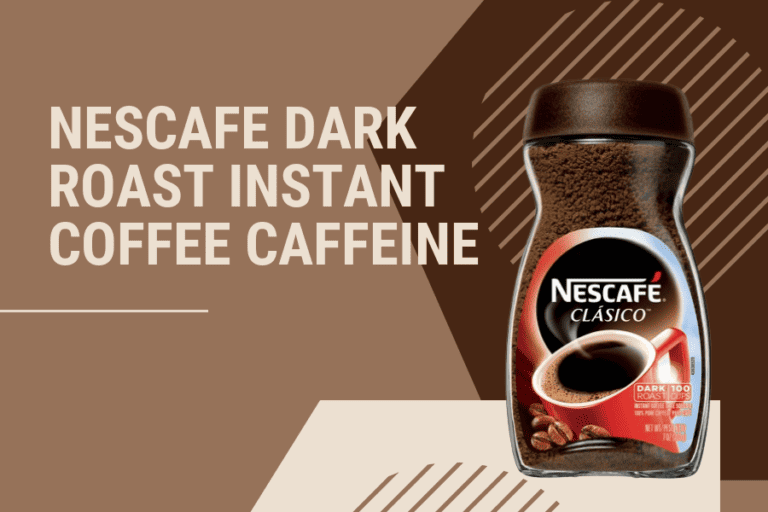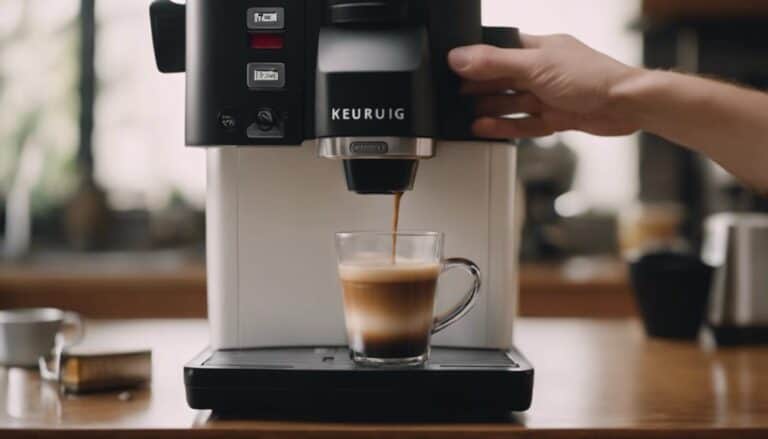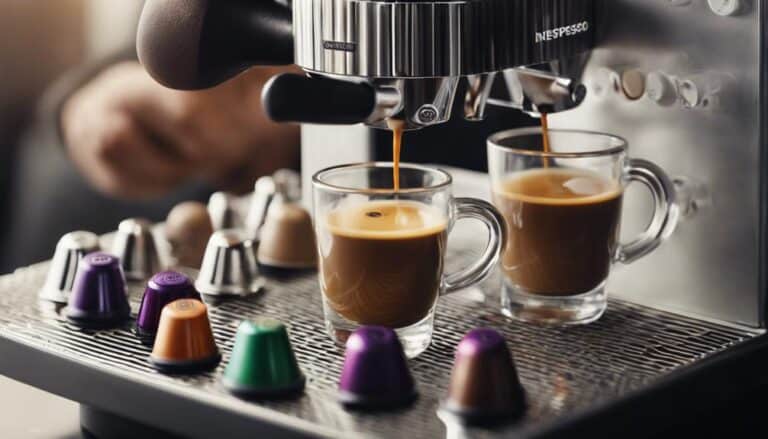Espresso Vs Cappuccino Vs Latte: 10 Key Differences
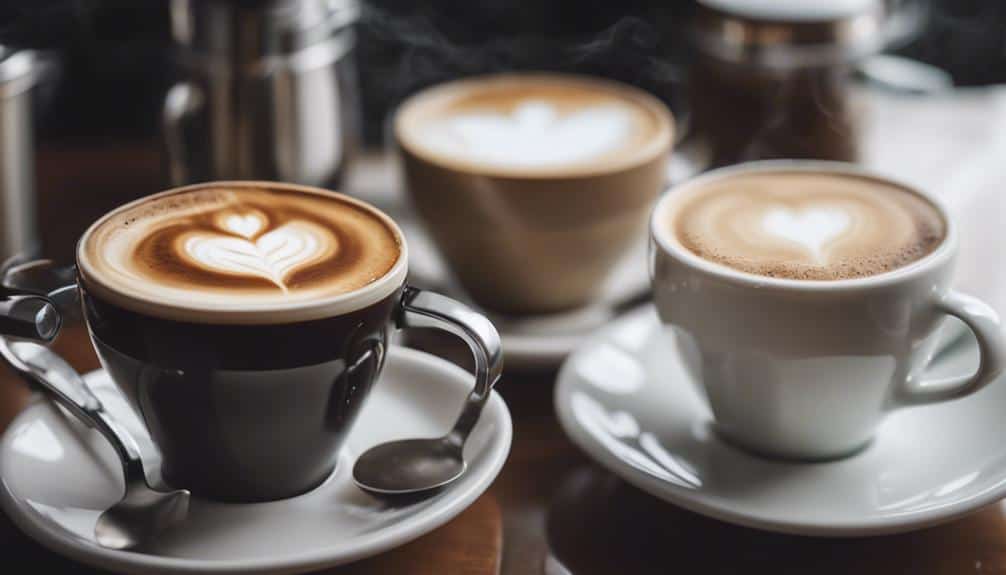
As a coffee enthusiast, the nuances between espresso, cappuccino, and latte never fail to interest me. The distinctions in ingredients, textures, and flavors paint a diverse landscape of coffee culture. Delving into the ten key differences between these beloved beverages sheds light on their individuality. From the origins rooted in different parts of the world to the caffeine levels and serving sizes, each aspect brings a new layer to the coffee experience. Stay tuned as we uncover the fascinating disparities that make these drinks unique and cherished by many.
Origins and History
Originating in Italy, the rich history of espresso, cappuccino, and latte reveals a flavorful narrative of tradition and innovation in the world of coffee.
Espresso, the strong and bold foundation of these beloved beverages, is a concentrated shot brewed under high pressure, providing a robust caffeine kick of around 63 mg per shot.
Moving to cappuccino, named after Capuchin monks, this delightful concoction harmoniously blends equal parts of rich espresso, velvety steamed milk, and airy microfoam, creating a balanced flavor profile that captivates the senses with approximately 130 calories in a 16 oz serving.
On the other hand, the latte, derived from 'caffe latte,' boasts a higher milk-to-espresso ratio, offering a smoother taste experience with roughly 210 calories in a 16 oz serving.
The historical origins of these beverages, whether debated like the latte or firmly rooted in Italian tradition like the cappuccino, showcase the cultural diversity and evolution of coffee consumption worldwide.
Milk to Espresso Ratio
In crafting the perfect espresso-based beverage, mastering the milk to espresso ratio is a fundamental aspect that greatly influences the drink's flavor and texture. The balance between espresso and milk can greatly alter the taste profile, creating either a robust and concentrated flavor or a creamier and milder coffee experience. Understanding the milk to espresso ratio is key to appreciating the nuances of each drink; whether it's the layered perfection of a cappuccino or the velvety smoothness of a latte.
| Drink | Espresso | Steamed Milk | Foam |
|---|---|---|---|
| Espresso | 1 | 0 | 0 |
| Cappuccino | 1 | 1 | 1 |
| Latte | 1 | 3 | 0 |
Espresso, with its 1:2 coffee-to-water ratio, delivers a concentrated and intense flavor, while a cappuccino's equal parts of espresso, steamed milk, and foam provide a harmonious blend of richness and texture. On the other hand, a latte's higher milk content results in a creamier texture that complements the espresso, offering a more subdued coffee taste. Mastering the milk to espresso ratio opens up a world of possibilities for creating your perfect espresso-based beverage.
Foam Texture
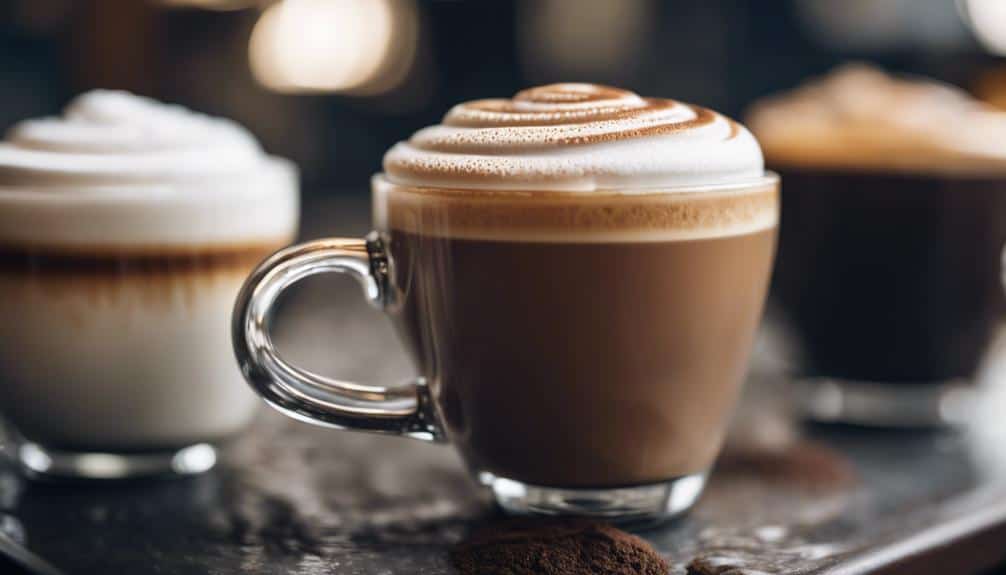
When crafting espresso-based beverages, the foam texture plays a crucial role in enhancing both the tactile and visual experience of the drink. The way the milk is frothed or steamed directly impacts the mouthfeel and overall appeal of cappuccinos and lattes. Here are some key differences in foam texture between these popular espresso drinks:
- Cappuccinos are known for their dry and fluffy foam texture, achieved through vigorous frothing of the milk. This results in a thicker and more pronounced layer of foam sitting atop the espresso.
- On the other hand, lattes boast a smoother and silkier foam texture created by steaming the milk to produce microfoam. The thin layer of foam in lattes seamlessly integrates with the steamed milk, offering a creamy and luxurious texture.
- Both cappuccinos and lattes rely on their distinct foam textures to not only elevate the mouthfeel but also enhance the visual appeal of these espresso beverages, making each sip a delightful experience.
Serving Size Differences
The differences in serving size among espresso, cappuccinos, and lattes reflect the varying preferences and experiences sought by coffee enthusiasts. Espresso, served in a standard 1 oz cup, delivers a potent and concentrated flavor punch ideal for those seeking a quick caffeine boost.
In contrast, cappuccinos, typically served in smaller 5-6 oz cups, strike a balance between espresso, steamed milk, and foam, offering a harmonious blend of flavors.
Lattes, with larger serving sizes ranging from 8-12 oz, cater to those looking for a milder taste with a higher milk-to-espresso ratio, resulting in a creamy and indulgent experience.
The serving size plays a crucial role in how the flavors are experienced, with espresso focusing on the intensity of the coffee, cappuccinos providing a well-rounded mix, and lattes offering a smoother and more velvety texture. Whether sipping from a small demitasse cup for a quick jolt of energy or enjoying a larger mug for a luxurious treat, the serving size of each coffee type contributes to the overall enjoyment and satisfaction of the drink.
Flavor Profiles
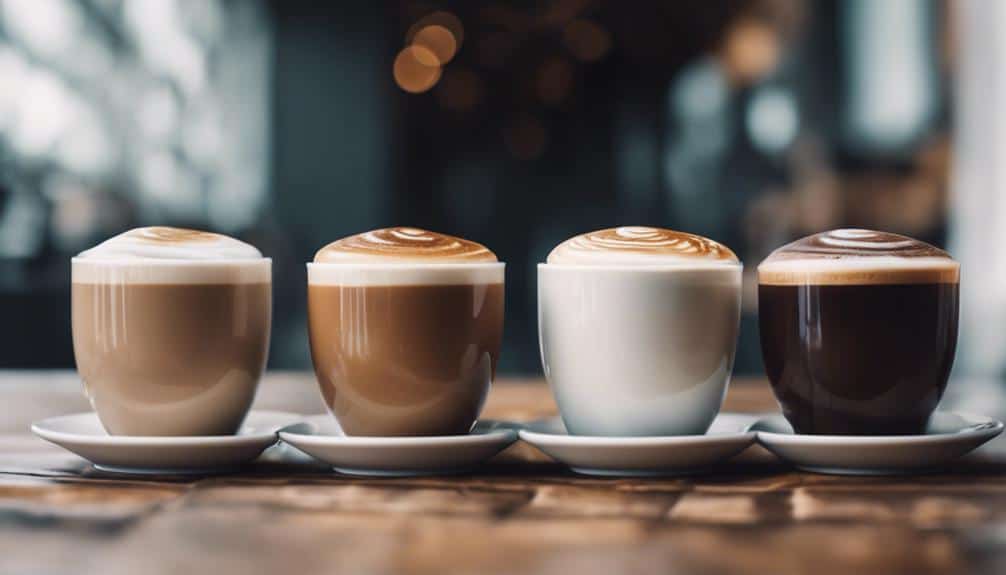
When it comes to the flavor profiles of espresso, cappuccino, and latte, each offers a unique tasting experience that caters to different preferences.
The intense and robust notes of espresso stand out for those who enjoy a strong coffee kick, while the creamy and balanced layers of a cappuccino appeal to those seeking a harmonious blend of coffee and milk.
On the other hand, the milder and creamier taste of a latte provides a smoother coffee experience with a focus on the richness of milk.
Taste Differences
While both cappuccinos and lattes offer distinct flavor profiles, they differ significantly in taste due to their unique ingredient ratios and textures.
Cappuccinos, with their equal parts of espresso, steamed milk, and foam, deliver a rich and creamy experience, perfect for those who enjoy a balanced coffee flavor with a velvety texture.
On the other hand, lattes, characterized by a higher milk-to-espresso ratio, present a milder taste that's creamier and smoother, making them ideal for individuals seeking a gentler coffee experience.
Additionally, the intense and robust flavor of espresso shines through in both drinks, providing a solid coffee base that can be further enhanced in lattes with customized flavored syrups like vanilla or caramel.
Aromatic Notes
Moving from the taste nuances of espresso, cappuccino, and latte, let's now explore the distinctive aromatic notes that define each coffee drink.
Espresso boasts a bold and intense flavor profile, with rich, concentrated coffee notes that create a robust and full-bodied aroma, appealing to those who enjoy a strong coffee experience.
Cappuccino, on the other hand, offers a balanced blend of espresso, steamed milk, and velvety milk foam, resulting in a flavor profile that combines the richness of espresso with the creaminess of steamed milk and the frothy texture of microfoam, providing a harmonious and satisfying aroma.
Latte, known for its milder coffee taste, delivers creamy, smooth notes from the steamed milk, offering a gentler aroma that appeals to those seeking a more subtle coffee experience.
Popular Variations
Among the array of popular variations in the world of lattes, flavored syrups like vanilla, hazelnut, or caramel are often sought after for their infusion of sweetness and depth of flavor. The versatility of lattes allows for creative combinations, making them a canvas for innovative drinks. Here are three intriguing options to explore:
- Alternative Lattes: These unique creations incorporate ingredients like matcha, mate, or various teas, offering a twist on the traditional latte experience.
- Chai Latte: Blending black tea with a mix of aromatic spices, chai lattes provide a flavorful and less caffeine-heavy alternative for those looking to explore different taste profiles.
- Trendy Flavors: Modern latte menus feature exciting options such as mocha, pumpkin spice, and chai, catering to diverse palates and keeping up with current flavor trends.
These variations showcase the adaptability of lattes, encouraging customization and exploration within the world of coffee enjoyment.
Caffeine Levels
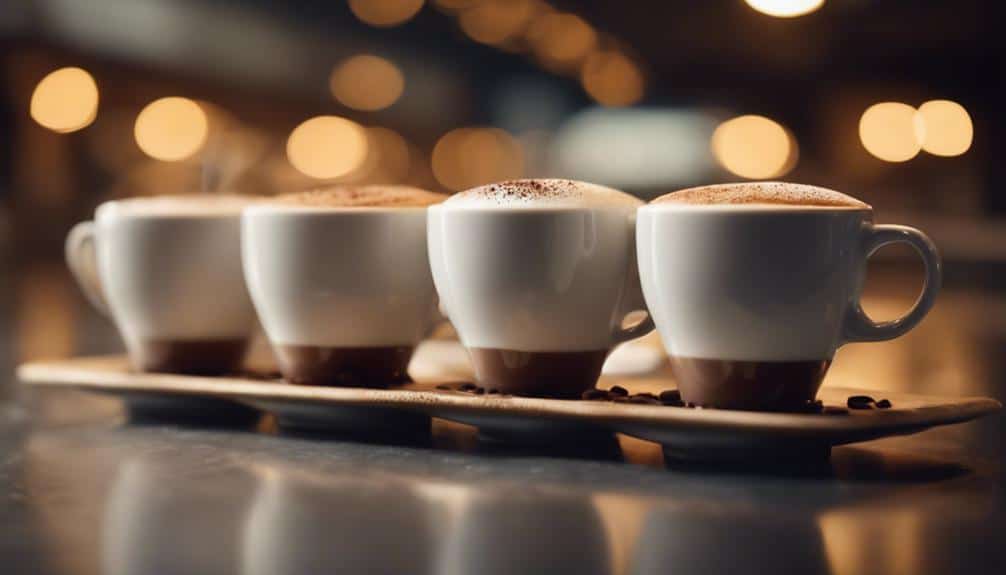
Espresso, known for its intense concentration of caffeine in a small 2 oz shot, offers a potent kick that surpasses the caffeine content found in a typical coffee. When comparing caffeine levels in popular coffee beverages like espresso, cappuccino, and latte, it's evident that the brewing method, serving size, and bean type play vital roles in determining the caffeine content. Here's a breakdown of the caffeine levels in a standard serving of each beverage:
| Beverage | Caffeine Content (mg) |
|---|---|
| Espresso | 63 |
| Cappuccino | 173 |
| Latte | 173 |
Espresso stands out for its higher caffeine concentration per ounce due to the brewing process that extracts the flavors and caffeine efficiently. On the other hand, cappuccinos and lattes offer a more balanced caffeine intake, making them suitable choices for those looking for a milder kick. Remember, when it comes to caffeine content, your choice of coffee beverage can greatly impact your overall coffee experience.
Caloric Variances
When examining the caloric differences among espresso, cappuccino, and latte, it's crucial to take into account the influence of milk content and additional flavorings on the total calorie count.
Here are three key points to bear in mind regarding the caloric variances in these coffee beverages:
- Espresso: A single 2 oz shot of espresso contains approximately 10-15 calories, making it a lower-calorie option compared to milk-based drinks like cappuccinos and lattes. Espresso's minimal caloric content is mainly due to its lack of milk, making it a suitable choice for those monitoring their calorie intake.
- Cappuccino: A 16 oz cappuccino typically has around 130 calories, with variations depending on the milk used and any added syrups. While cappuccinos offer a balance of espresso and milk, they tend to have fewer calories than lattes due to their higher coffee to milk ratio.
- Latte: In contrast, a 16 oz latte can contain approximately 210 calories, making it the highest in caloric content among the three. The calorie count in lattes is mainly influenced by the amount of milk used, making it a richer and creamier option for those who prefer a more indulgent coffee experience.
Understanding these caloric differences can help individuals align their coffee choices with their dietary preferences.
Brewing Methods
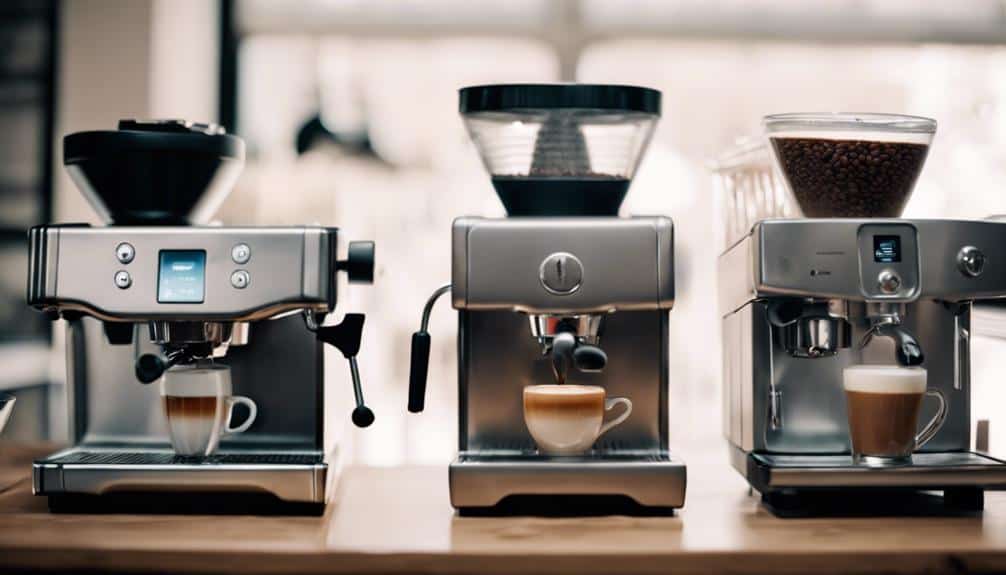
Utilizing distinct brewing techniques tailored to their specific ingredients and ratios, espresso, cappuccino, and latte each offer a unique and flavorful coffee experience. Espresso, known for its bold and intense flavor, is brewed by forcing hot water through finely-ground coffee beans under high pressure, resulting in a concentrated shot of coffee that's rich and aromatic.
On the other hand, cappuccino delights with its equal parts of espresso, steamed milk, and milk foam meticulously layered to create a harmonious blend of flavors and textures. The unique brewing method of cappuccino requires skillful frothing and steaming of milk using a steam wand to achieve its signature creamy foam.
Latte, with its milder taste, involves combining steamed milk with a shot of espresso in a ratio of approximately 2:1, resulting in a smoother and more velvety coffee experience. The key to a perfect latte lies in achieving the right balance between the milk and espresso, creating a harmonious blend that appeals to those who prefer a creamier texture.
While espresso machines are essential for brewing a perfect shot of espresso, cappuccinos and lattes rely on the art of steaming milk and creating frothy textures to elevate the overall coffee drinking experience.
Cultural Significance
With a rich tapestry of cultural influences, the preparation and presentation of cappuccino and latte beverages showcase the nuanced traditions and preferences that shape coffee experiences worldwide. When exploring the cultural significance of espresso, cappuccino, and latte, it's fascinating to note how these drinks are deeply intertwined with the coffee traditions of different regions.
- Italy's Espresso Culture: In Italy, espresso holds a special place in daily life, often consumed as a quick shot packed with bold flavors. However, cappuccino and latte also play significant roles, with specific milk ratios and serving styles that reflect the country's rich coffee heritage.
- Global Impact of Cultural Influences: Countries like Australia infuse their unique cultural influences into the preparation and presentation of cappuccinos and lattes, showcasing how regional variations can shape coffee experiences beyond traditional norms.
- Regional Differentiations: From cup styles to frothiness and toppings, the distinctions between cappuccino and latte vary across regions, highlighting how local preferences and traditions influence the enjoyment of these popular coffee beverages.
Conclusion
In conclusion, the differences between espresso, cappuccino, and latte go beyond just their ingredients and ratios. Each of these coffee beverages offers a unique experience in terms of flavor, texture, and caffeine content.
Whether you prefer the bold kick of espresso, the creamy richness of a cappuccino, or the smooth indulgence of a latte, there's a coffee drink out there to suit every taste preference and cultural tradition.
Cheers to the diverse world of coffee!



